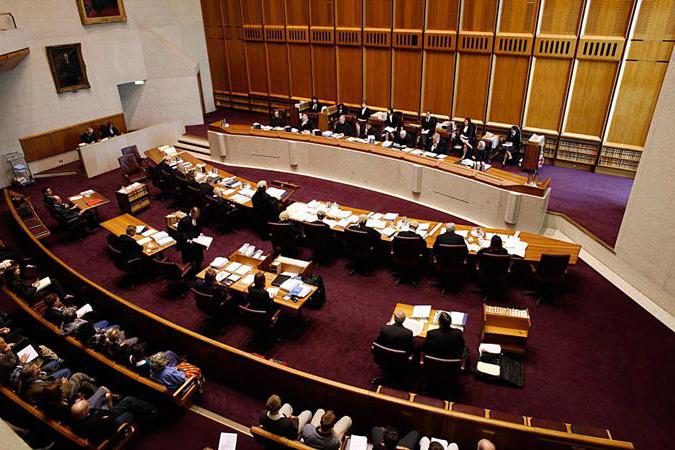The formal certainty of law is one of its main features. Not having an expression outside, material content, which is a way of existence, a legal norm cannot fulfill its tasks of regulating relations in society. Thus, the form of law is a means of expressing the will of the state, legal rules of conduct. It can be expressed in four forms, such as legal custom, regulatory contract, legal precedent and a normative act, including the law, concept, signs, the types of which will be considered in this article.

What is a normative act?
This concept is defined as a legal act that is adopted by authorized bodies containing prescriptions of permanent action, which are general in nature and designed for multiple application in practice. They are published strictly in the prescribed form. According to the level of legal force, they are divided into two impressive groups: by-laws and laws, which further have an even more ramified structure.
Concept and signs of the law
Under the law, traditionally in the theory of state and law, they mean a normative act adopted in a special order by legislative authorities (or a referendum), expressing the will of the people, regulating the most important social relations and having the highest legal force. The definition is comprehensive and will be useful not only to students of law schools, but also to ordinary citizens. Remembering it once, subsequently, without difficulty, you can reproduce the signs of a legal law.
Signs of law
- Only a referendum or legislative body can accept it.
- When accepting, it is necessary to follow a certain procedure, which is established by the Constitution of the Russian Federation and the Regulations of the Federal Assembly of the Russian Federation.
- He must express the interests and will of the people.
- It has the highest legal force, therefore, all by-laws should not contradict it in any way and fully comply.
- Regulates the most significant relationships in society.

In aggregate, all of the listed features of laws give them such a quality as supremacy in the system of normative acts. Only the body that accepted them can change or cancel them, and with strict adherence to the procedure established for this.
Legal Classification
The distribution of laws into groups can be carried out according to several criteria. The very first of them is legal force. The dominant place in this case is the Constitution of the Russian Federation. It is a constituent, fundamental political and legal act that establishes the rights and freedoms of a citizen and a person, determines the form of government and government, establishes federal government bodies of the state.
The next place in the hierarchy is occupied by the Federal constitutional laws. They are adopted and regulate issues that are provided for by the Constitution of the Russian Federation and are organically related to it. For example, the Federal Law on the referendum, the judicial system, military courts, etc. The main features of laws remain the same.
Further in the structure are normative acts of the current legislation that highlight various aspects of the political, socio-economic and spiritual life of society. For example, codes (Criminal, Civil, Labor, etc.).
The next step is the laws adopted by the constituent entities of the Russian Federation, or rather, their representative authorities. Their peculiarity is limited action, they "work" only in a certain territory.

Legal Classification
Depending on the subject of legal regulation, laws can be administrative, labor, civil, constitutional, criminal. Moreover, each of them has its own definition, while the main properties remain common, but with minor additions. For example, signs of a criminal law include such a thing as normativity. It contains the rule of law - generally binding rules of conduct for people.
Validity classification
Depending on this criterion, laws can be permanent and temporary. In the first case, they do not have a time limit, and in the second, on the contrary, certain time frames are set. For example, the Law on the budget of the Russian Federation (or a separate region) for 2016. Emergency laws should also be mentioned here. Their adoption is possible only in a certain situation, which should be stipulated by the Constitution. Signs of laws of this kind have features. They are published in emergency situations in the country or are characteristic of totalitarian and authoritarian regimes management. In the first case, they are temporary and cease to exist after the normalization of the situation. The Constitution of the Russian Federation does not provide for the possibility of publishing this type of laws.

These are the main classification criteria. In addition, depending on the content, laws can be social, budgetary, political, etc. on the degree of systematization - codification (Civil Code, Criminal Code of the Russian Federation, etc.) and ordinary; on the scope of regulation - special and general; from the field of activity - regional and federal.
By-Laws
They are issued on the basis of laws and for their implementation, contain legal norms, but have less power. They play a rather important role in the life of society, performing detailed and auxiliary functions. They are the so-called secondary link. Moreover, the signs of laws and regulations are different. The latter should not contradict the former.
Types of by-laws
- Decrees issued by the President of the Russian Federation. They are binding and valid throughout the country. However, they must not contradict the Constitution, federal laws. As a rule, the issuance of decrees is resorted to if gaps in law are discovered.
- Decisions of the Government of the Russian Federation. Their main feature is that they are most often accepted in execution and always on the basis of laws. They are subject to official publication in the media no later than the established 15-day period.

- Charters, orders, instructions, regulations of ministries and departments, state committees.
- Decisions and decisions of local state authorities. For example, the regional Duma, the Representative Assembly, etc.
- Orders, decisions, decisions of state bodies of local self-government, namely: governors, heads of administrations, etc.
- Normative acts adopted by municipal (non-state) bodies. They are published and accepted within the competence of these structures and operate within certain entities - villages, towns, districts, cities, etc.
- Normative acts of a local nature. They are adopted at the level of a specific organization, company, enterprise and regulate internal issues. The most typical example is the rules of the work schedule.
The effect of the law in time
All normative acts, including the law (signs and types discussed above) have their terms of operation. So, they come into force after 10 days from the date of their official publication, unless otherwise specified by them and the procedure.

Retroactive laws of the Russian Federation do not possess. In other words, they cannot extend their action to relations that arose before their adoption and entry into force.Retroactive force can be given in two ways: directly include this clause in the law (concept, features, types above), or apply it in cases where it mitigates or completely eliminates any type of liability.